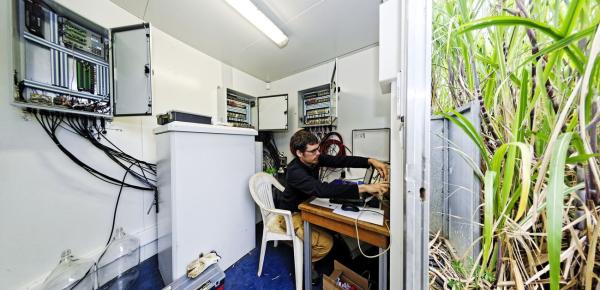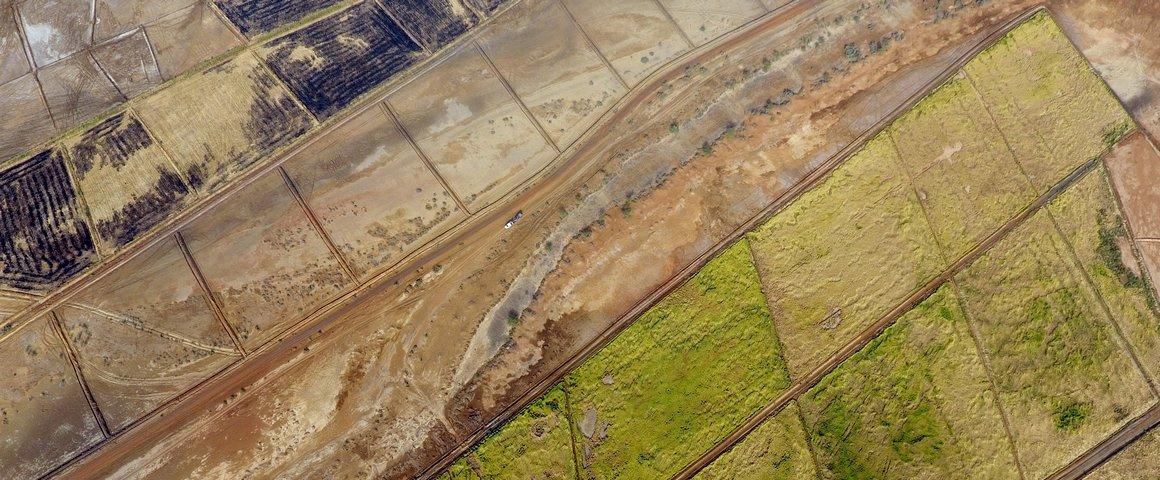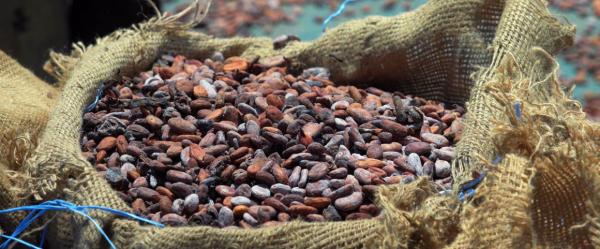Soils contain three times more carbon than the atmosphere. They also contribute to atmospheric carbon capture in the form of organic carbon, by means of CO2 uptake by plants. They therefore play a major role in climate regulation, as well as being a vital resource for the production of 95% of food.
While soils have a fundamental place in our lives and in our land-based activities, they have only recently become a point of interest on the global political stage, including in climate talks. "The first international governance body concerning soils dates back to 2013", says CIRAD ecologist Julien Demenois. "The European Union addressed the topic in 2021, through its soil protection strategy for 2030". In a new article for Diplomatie, he looks back over the main issues surrounding soils on an international level, with a view to fighting climate change.
Soils are under threat from climate change
According to IPBES, a third of land is already moderately to highly degraded. This trend could worsen as climate change continues to take effect. The main three risks are erosion, nutrient imbalances and organic carbon losses. "Drought episodes reduce plant cover and thus make soils more vulnerable, notably to erosion", Julien Demenois observes. "Conversely, increased rainfall intensity exacerbates runoff and thus erosion. Water reserves and groundwater recharge are also affected."
At the same time, the amount of organic carbon stored in soils is constantly changing, due to changes in land use. In particular, converting natural ecosystems into agricultural land leads to a drop in carbon levels in the uppermost soil layers. To give just one example, converting forest into cultivated land in the tropics has triggered a 25 to 30% drop in organic carbon stocks. This has increased greenhouse gas concentrations in the atmosphere, hence contributed to climate change.
Farming and forestry practices can foster storage
Julien Demenois is Correspondent for the "4 per 1000 | Soils for food security and climate" initiative at CIRAD. The initiative aims to develop farming and forestry practices that maintain or improve soil organic carbon stocks. The storage potential of cultivated land and pasture is huge: provided virtuous practices are adopted, those zones could capture between 10 and 20% of GHG emissions from the farming and forestry sector every year between now and 2050.
In this context, CIRAD is lobbying for agroecology, with bespoke practices or combinations of practices for different situations. Agroforestry, conservation agriculture and restoration of degraded pastures... the possibilities are many and varied. "Research has a huge role to play in defining practices suited to the issues facing different territories", the researcher says. "As well as the agronomic or ecological aspects, we need to look at food security and economic viability, for instance. We have to work on the co-benefits of sustainable land management."
The "Overseas 4 per 1000" study, coordinated by CIRAD in partnership with INRAE and IRD, set out to inventory soil carbon stocks in the French overseas regions. The authors made operational and research recommendations to preserve these substantial stocks and tackle the main agricultural issues resulting from climate change on a national and territorial level.
A question of geopolitics
On average, it takes 40 000 years for a one-metre-thick soil to form. Soils should therefore be seen as a non-renewable resource and a source of geopolitical issues. For instance, not all countries are equal from a carbon point of view. As things stand, just ten countries currently hold more than 60% of global soil organic carbon stocks, and the potential to boost those stocks varies greatly from one country to another.
"Once soil carbon stocks are included in implementation of the Paris Agreement, countries can use them as a bargaining tool", Julien Demenois stresses. This could allow some large countries to use soil management to control the rate of climate change. The idea of carbon neutrality is also a game-changer. Moreover, in countries looking for carbon credits, large-scale land acquisitions could well gain pace.





























